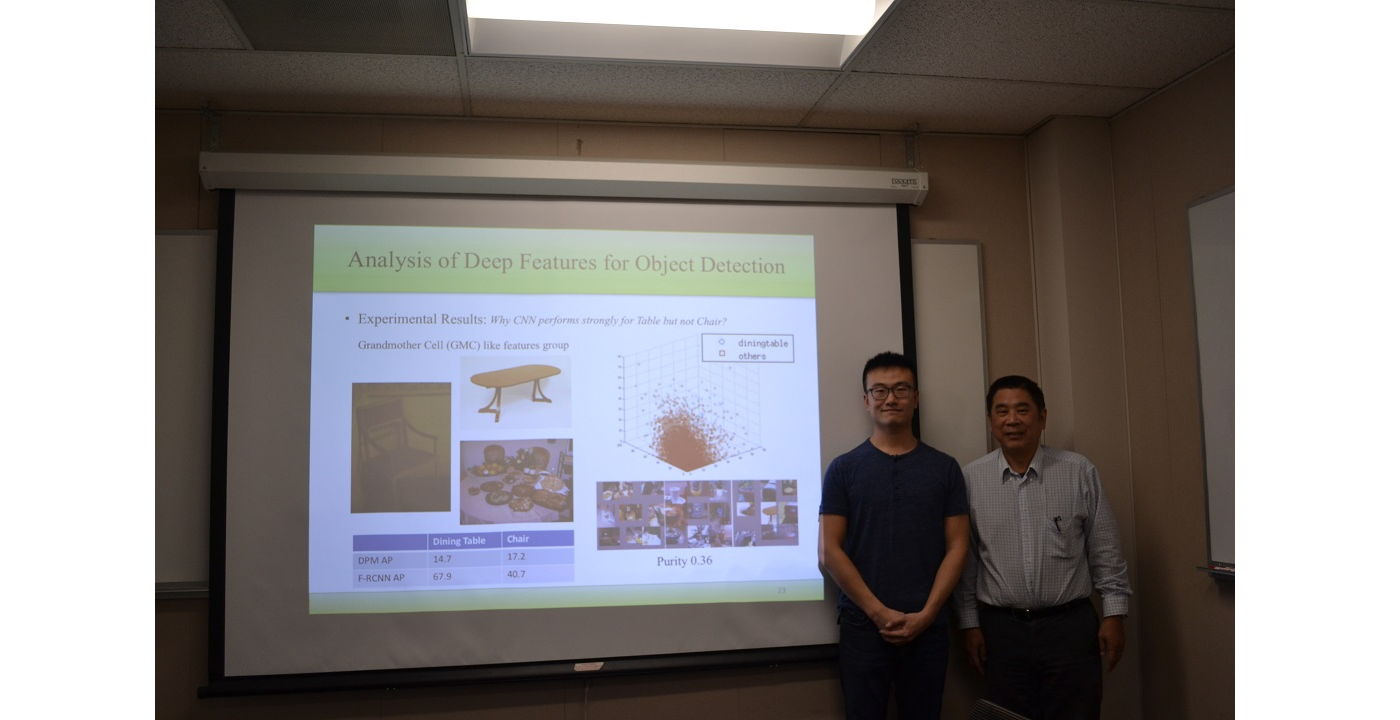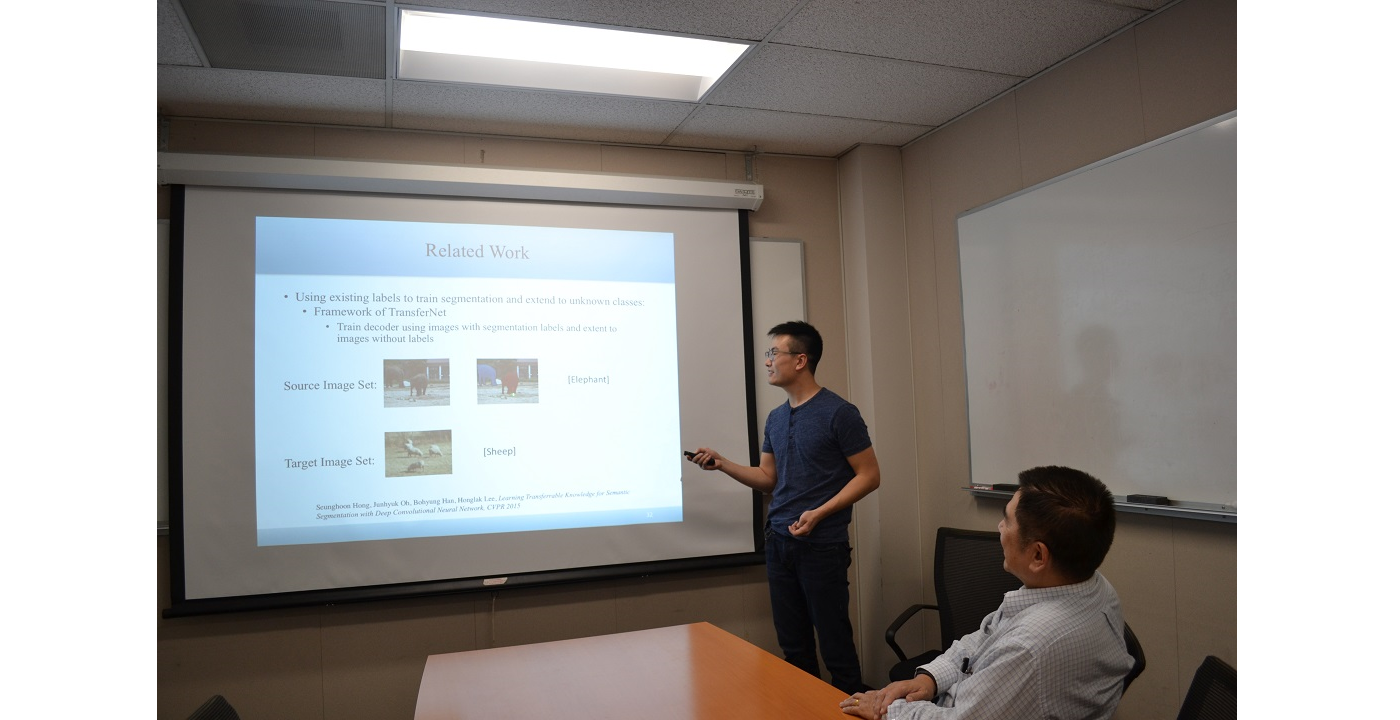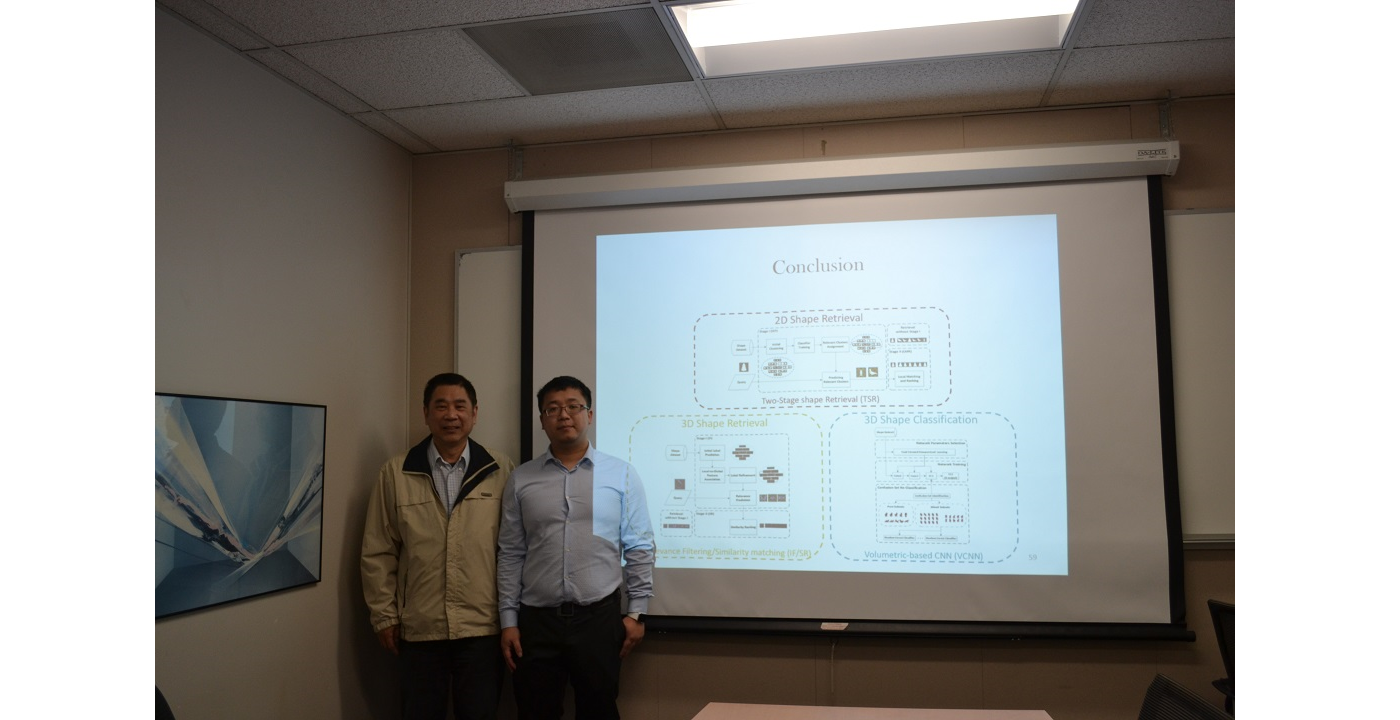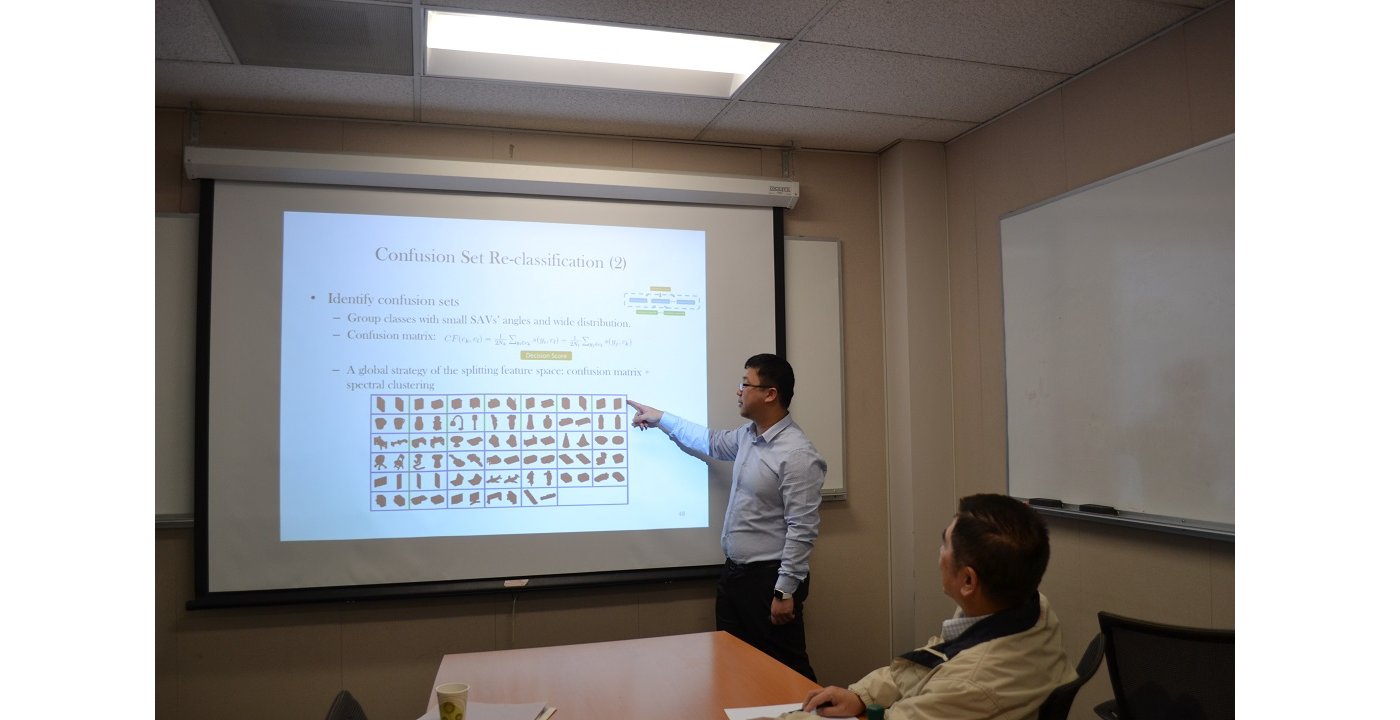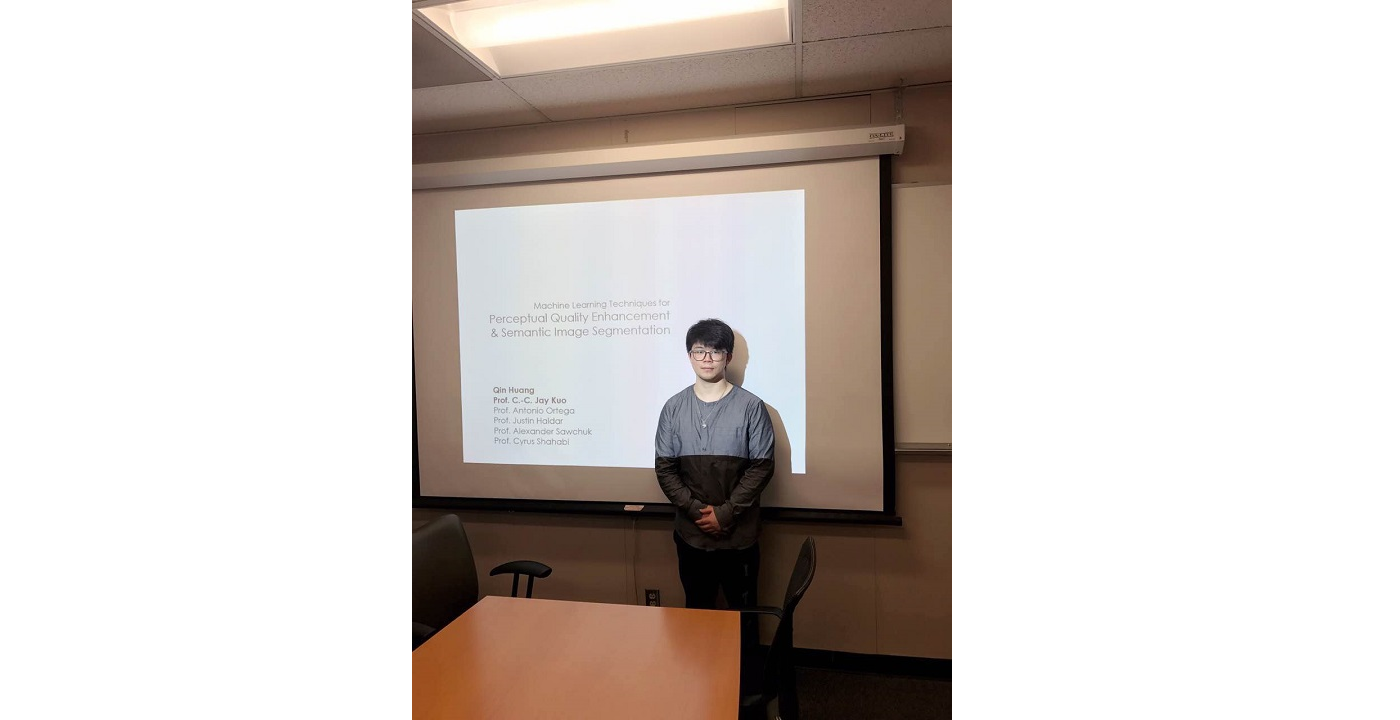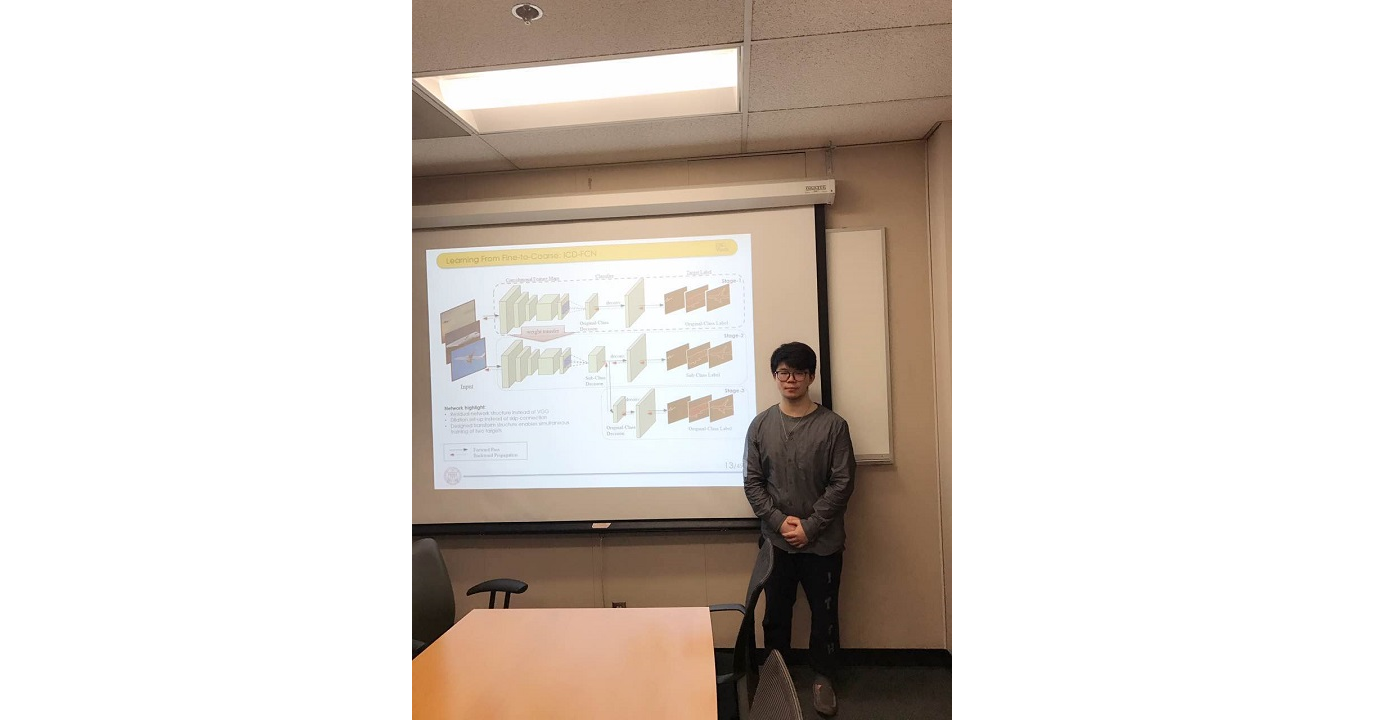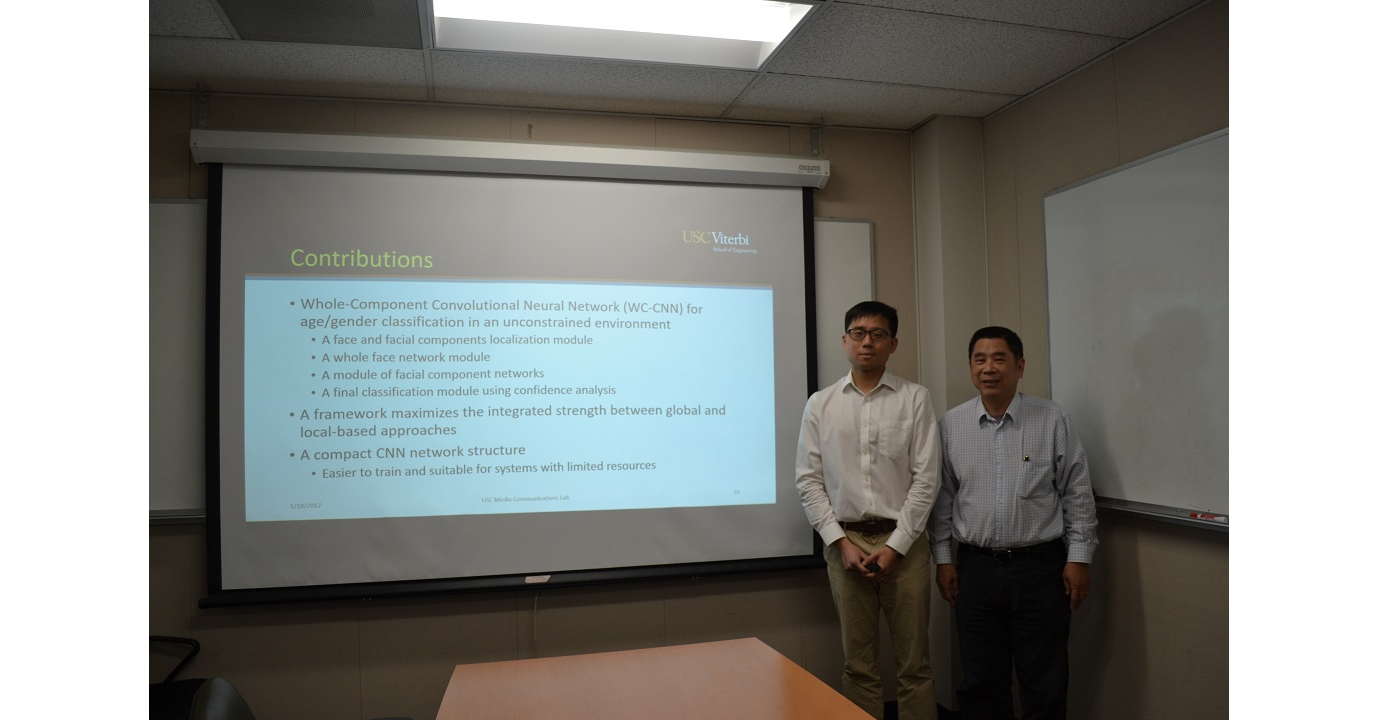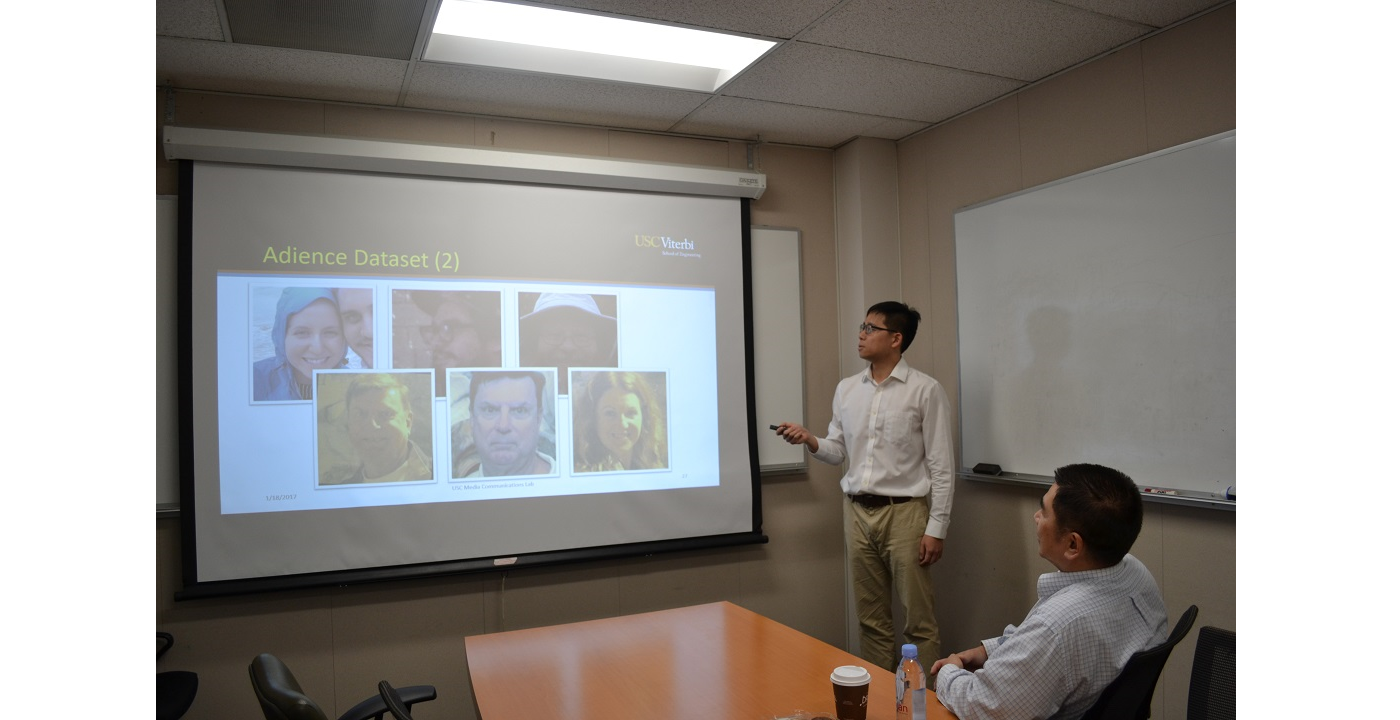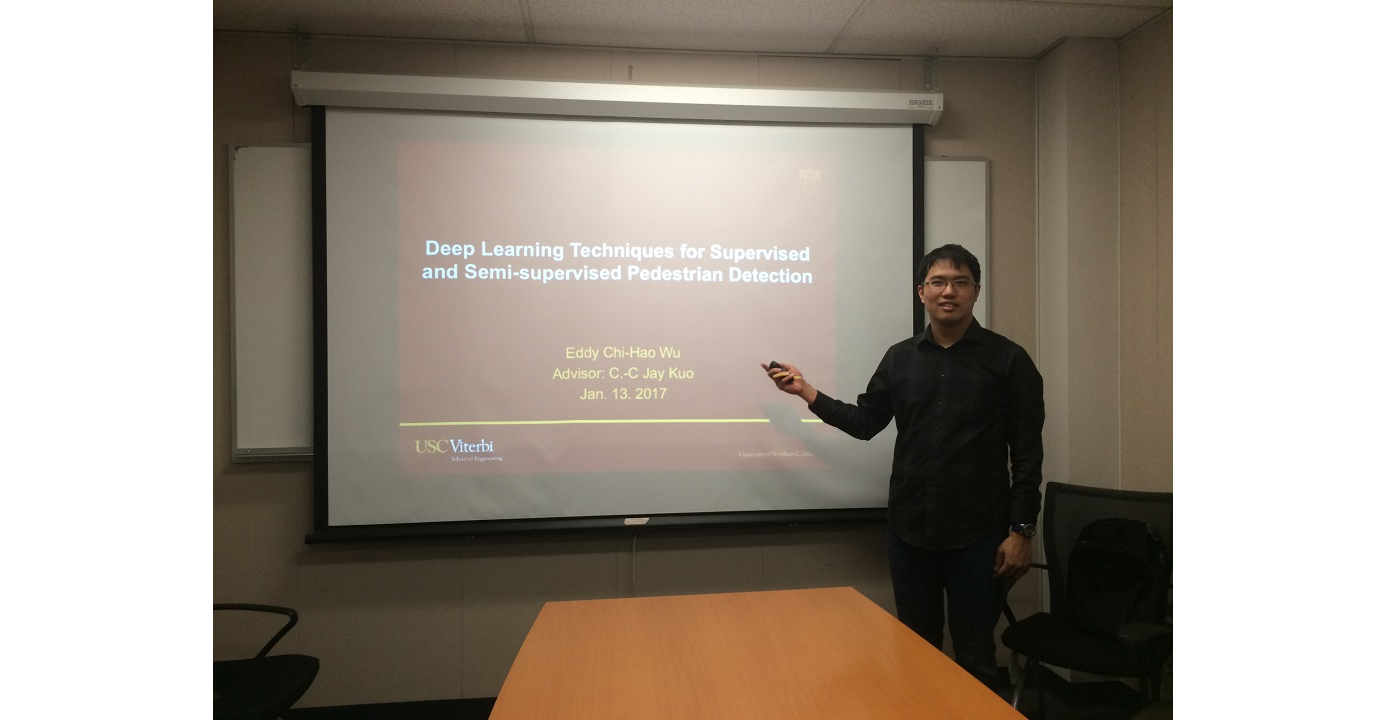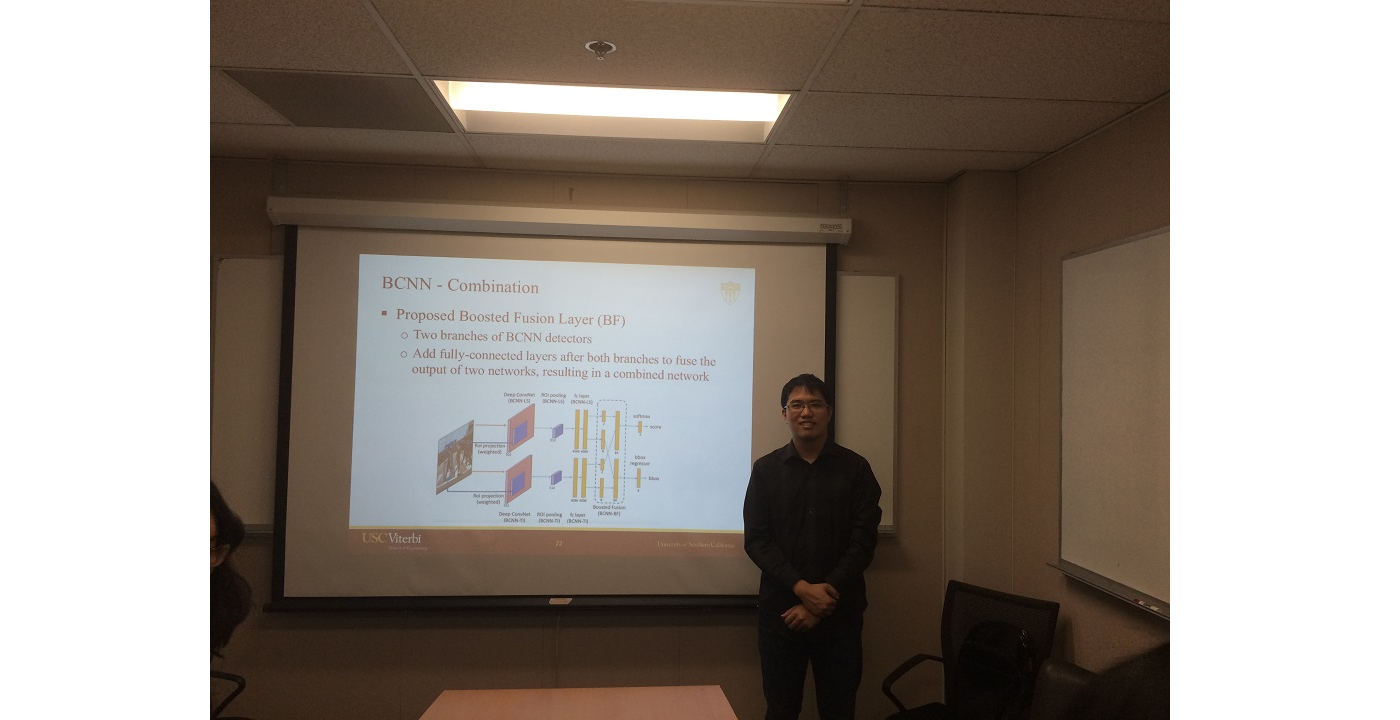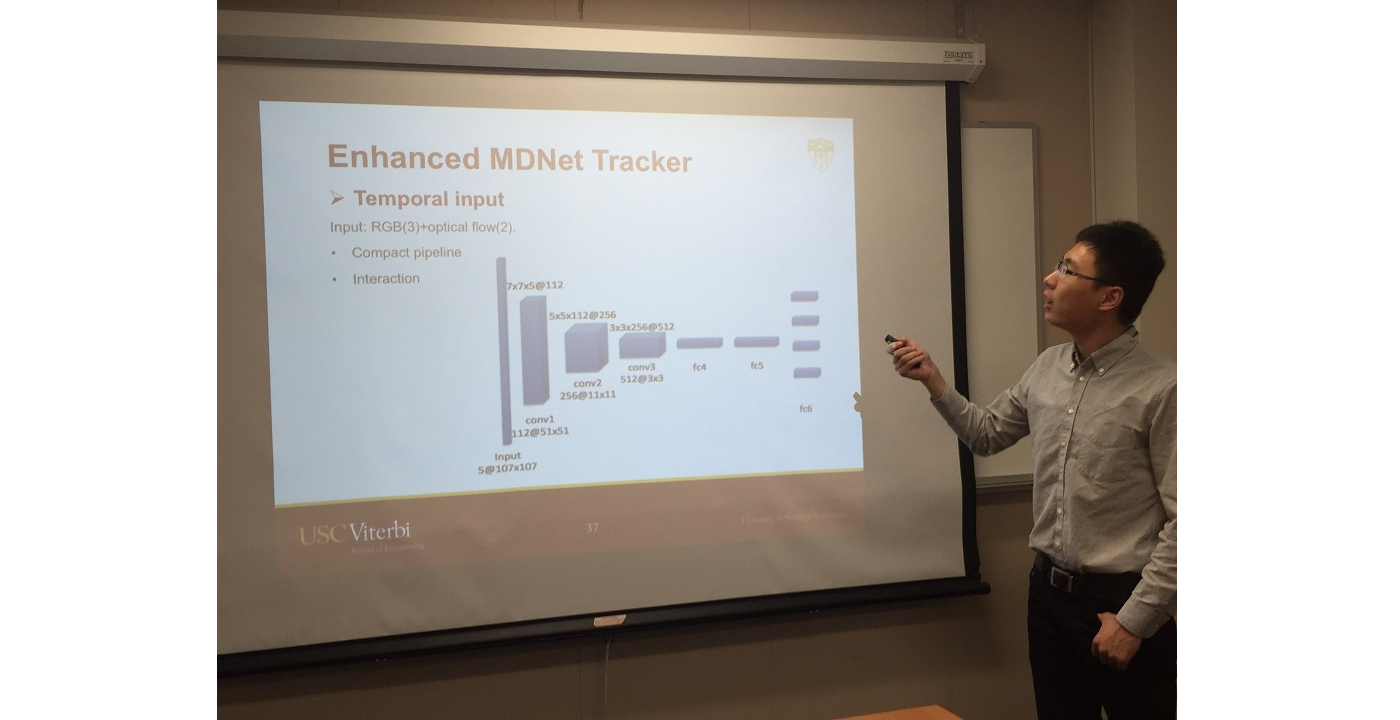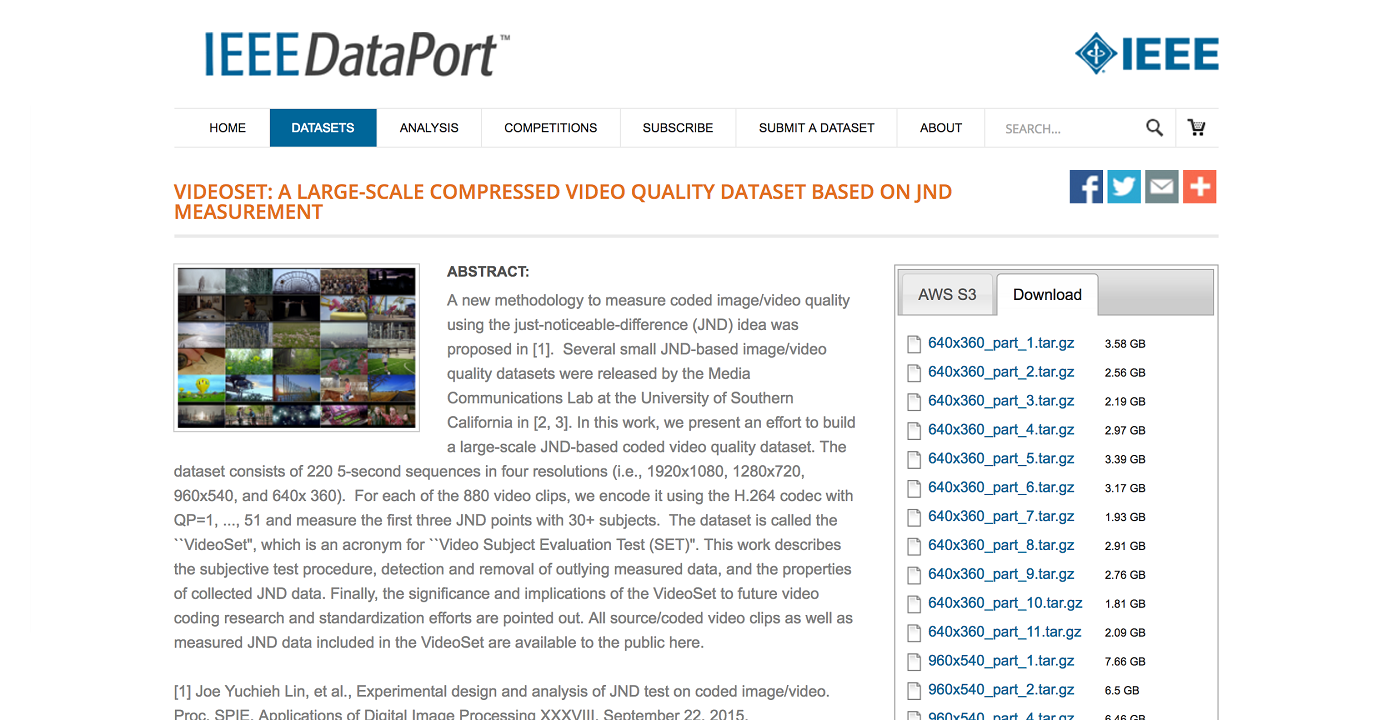Congratulations to Hao Xu for Passing His PhD Defense
Congratulations to Hao Xu for passing his defense on January 23, 2017. His Ph.D. thesis is entitled “Understanding Deep Learning from Its System Architectures, Feature Representations to Applications”.
Abstract of thesis:
Deep learning plays key roles in various aspects of the modern computer vision research. Our research focused on analyzing, adopting, and developing better CNN architectures which outperform the previous methods. To begin with, a car detection method using deformable part models consisting of composite feature sets (DPM/CF) is proposed. It recognizes cars of various types and from multiple viewing angles. The DPM/CF system consists of two stages. In the first stage, an HOG template is used to detect the bounding box of the entire car of a certain type and viewed from a certain angle (called a t/a pair), which yields a region of interest (ROI). In the second stage, we detect each salient part in a given t/a-specific ROI using either the HOG or the CNN feature. An optimization procedure based on latent logistic regression is adopted to choose the most discriminative location/size and the most suitable feature set for each part automatically. It is observed that the DPM/CF detector can strike a balance between detection performance and training complexity, through selecting the capable and simple feature from the composite feature set. Extensive experimental results are given to demonstrate the superior performance of the proposed DPM/CF method.
The CNN features used in DPM/CF demonstrate strong performance in detecting objects from images. To analyze the strength and weakness of the CNN feature representation, two quantitative metrics are proposed for the automatic evaluation of trained features at different convolution layers. The Gaussian confusion measure (GCM) is used to identify the discriminative ability of an individual feature, while [...]

